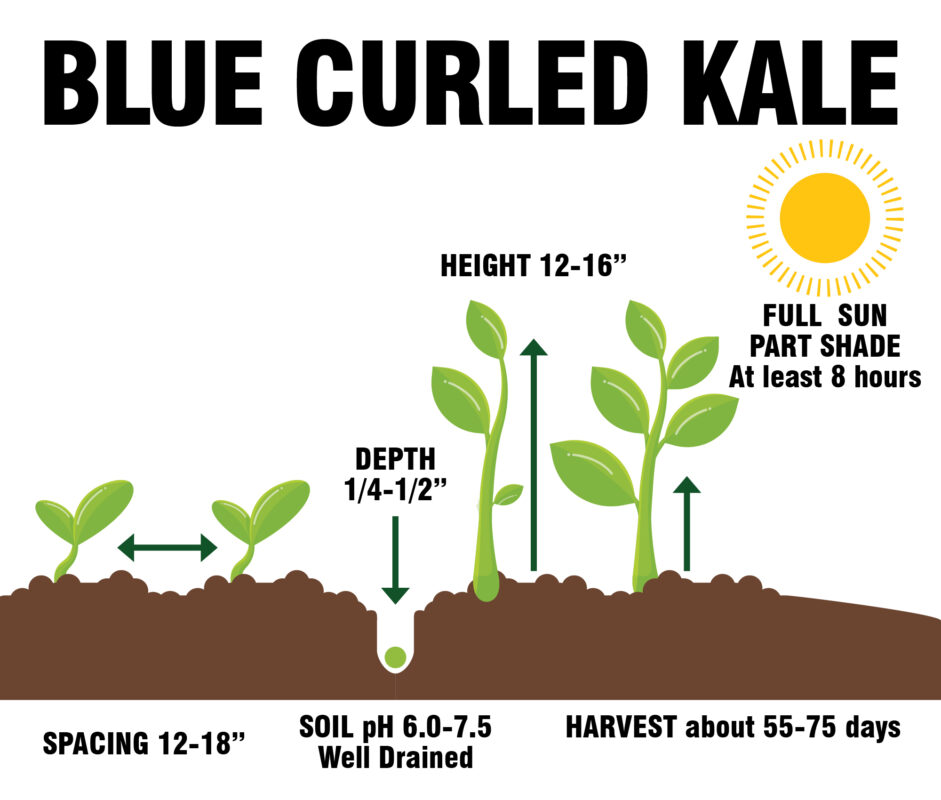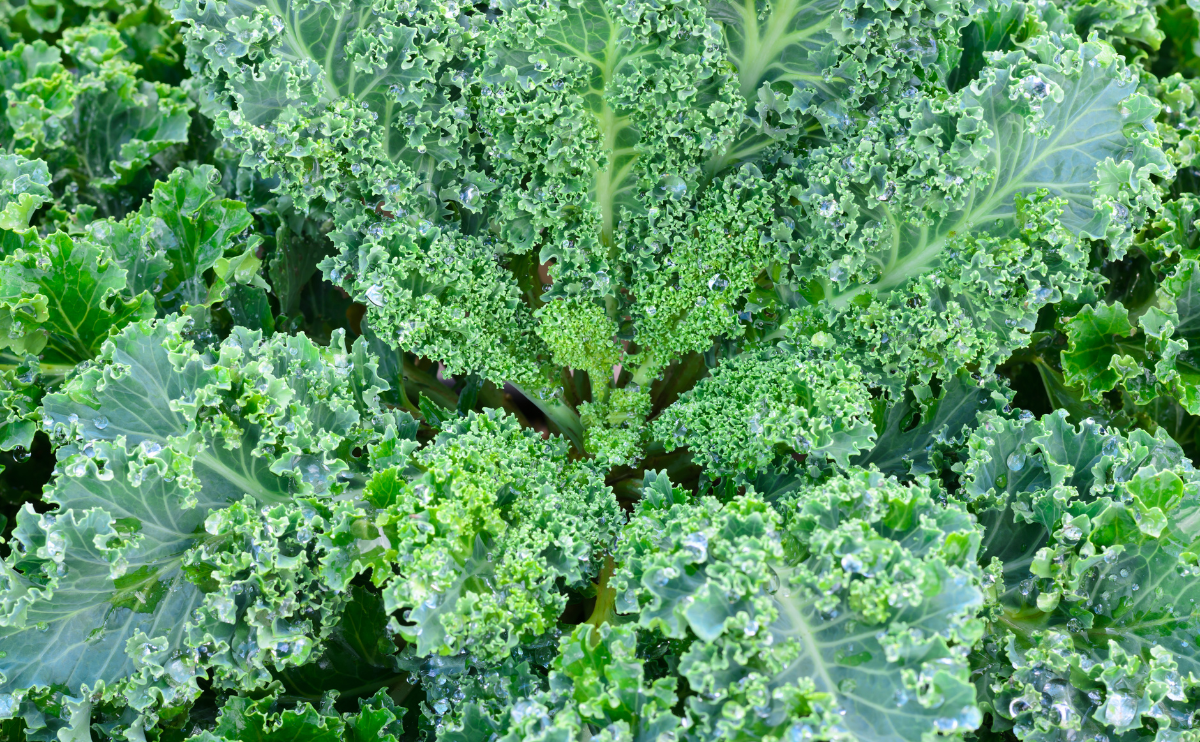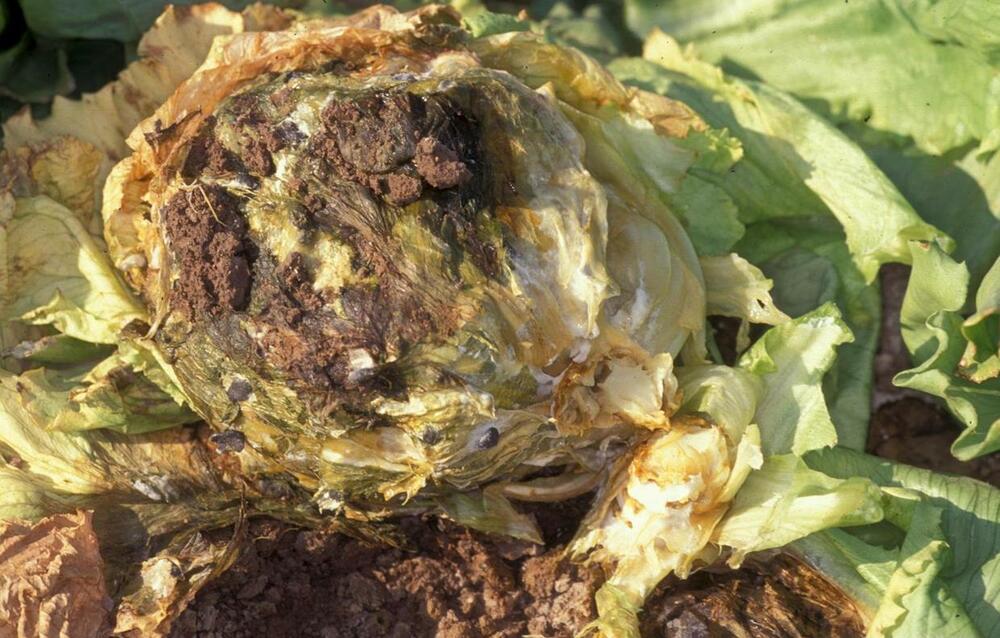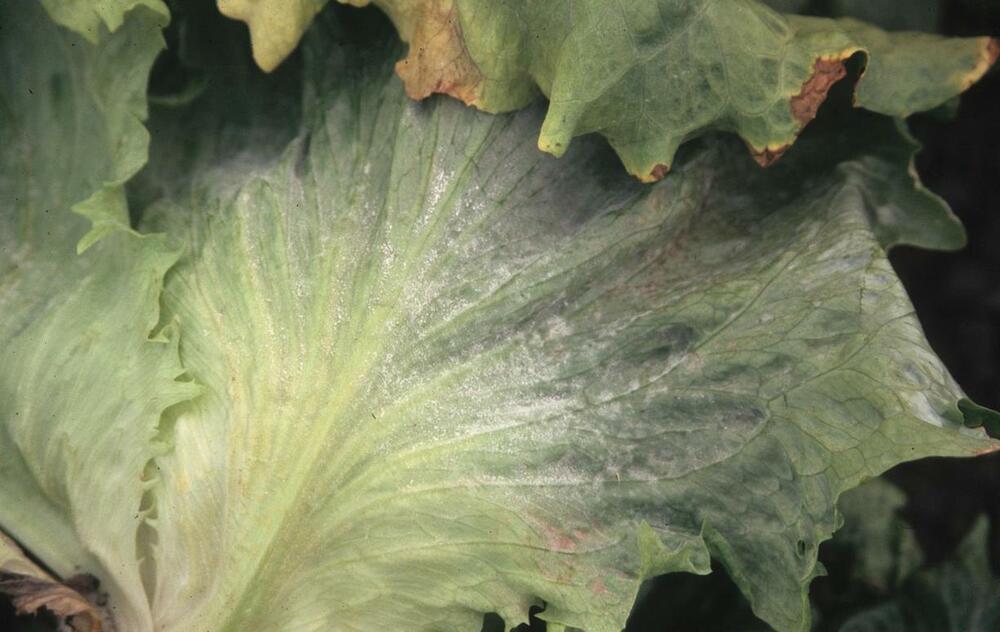Kale (Brassica oleracea) is essentially a form of cabbage that doesn’t have the tightly formed head associated with most cabbages, and it’s grouped in the cooking greens category with collards, mustard, and Swiss chard. Kale plants can be quite ornamental, with textured and curly leaves that come in shades of green, purple, and other colors. Kale has a relatively fast growth rate and can grow from seed to harvest in about three months. It is best planted in the late winter or early spring and can also be planted in the late summer for a fall to winter harvest. Kale does come back every year, but this biennial plant takes two years to complete its growth cycle—so it grows leaves in its first year, while seeds and flowers develop in its second growing season.

| Common Name | Kale, ornamental kale |
| Botanical Name | Brassica oleracea |
| Family | Brassicaceae |
| Plant Type | Annual, biennial, vegetable |
| Mature Size | 1–2 ft. tall, 1–2 ft. wide |
| Sun Exposure | Full sun, partial sun |
| Soil Type | Loamy, moist, well-drained |
| Soil pH | Acidic |
| Bloom Time | Spring |
| Hardiness Zones | 7–9 (USDA) |
| Native Area | Europe |

When to Plant?
This will be determined by your planting zone. There is a final frost date for each area. As a result, you can plan your gardening activities around this date. Check our Frost Dates Across North America: First & Last Frost Dates Chart. However, the date will not be the same for every plant.
How to Plant
Kale is a fast-growing vegetable that does best in a planting location with full sun. Plant kale seeds about 1/2 inch deep, leaving at least 1 1/2 to 2 feet between each plant. High nitrogen content in the soil is important for kale to grow its leaves, so adding a few inches of organic matter like compost to a well-draining soil mixture will encourage a healthy harvest

How to Cultivate
Direct seed about three months before expected fall frost. Plant seeds ¼ to ½ inch deep, 1 inch apart in rows 18 to 30 inches apart. Thin to 12- to 18-inch spacings. Eat or transplant thinnings.
Prefers well-drained, fertile soil high in organic matter, pH 6.0 to 7.5. Can tolerate slightly alkaline soil. Prefers plentiful, consistent moisture. Can tolerate drought, but quality and flavor of leaves suffer.
How to Harvest
Expect to wait approximately two months for your kale plants to mature from seeds. Check the days to maturity on your seed packet or plant label for more precise timing. Spring-planted kale will be good for harvesting throughout the summer months, but it’s especially tasty after a light frost.
You can harvest young kale leaves to use fresh in salads or allow your plants to mature for use as a cooked green. Remove the older outer leaves, and allow the center of the plant to continue producing. Kale will keep in the refrigerator, ideally in the crisper drawer, for about a week.
Hydroponics
Germination: Soak kale seeds for 8-12 hours, then transfer to moist germination paper or vermiculite in a warm, humid place (65-75°F). Check daily for germination, keeping the paper/vermiculite moist until seeds sprout (usually within 3-7 days).
pH range: Blue Curled kale grows best in a slightly acidic to neutral pH range of 5.5-7.0. Regularly monitor the pH levels of the nutrient solution and adjust as necessary using pH adjusters.
EC (Electrical Conductivity): The recommended EC range for growing Blue Curled kale hydroponically is between 1.5-2.5 mS/cm.
PPM (Parts Per Million): The PPM range for Blue Curled kale is between 1000-2000 ppm. This measurement can be taken using a TDS (Total Dissolved Solids) meter.
Humidity: Blue Curled kale prefers high humidity levels of around 70-80% during the vegetative stage. You can achieve this by misting the plants with water or using a humidifier in the grow room.
Light hours: Blue Curled kale requires at least 12-14 hours of light per day during the vegetative stage. A full-spectrum LED grow light is recommended, placed at a distance of 18-24 inches above the plants.
Temperature air: The ideal temperature range for growing Blue Curled kale is between 60-75°F (15-24°C) during the day and 50-60°F (10-15°C) at night.
Temperature water: Maintain a water temperature range of 65-75°F (18-24°C) for optimal Blue Curled kale growth. Use a water heater or chiller as needed to regulate the temperature.
With these guidelines, you should be able to grow healthy plants hydroponically. Good luck, and happy growing!




